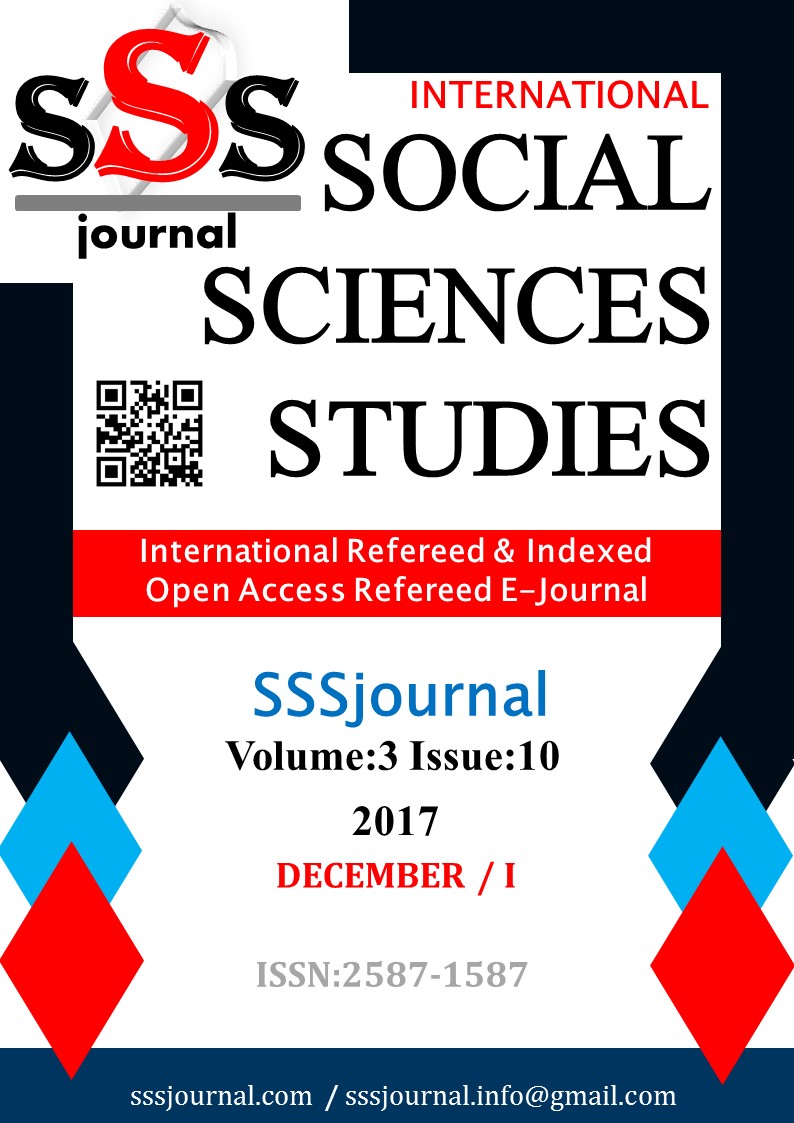Author :
Abstract
İşsizlik, diğer ülkelerde olduğu gibi Türkiye’de de önemli sorunlardan biri olarak karşımıza çıkmaktadır. Ayrıca bölgeler arasında mevcut olan sosyo- ekonomik gelişmişlik farklılıkları işsizlik olgusunun da bölgesel kapsamda ele alınmasını gerekli kılmaktadır. Bu doğrultuda örneklem verilerinin bir konuma ait olması mekânsal bağımlılık ve mekânsal farklılık kavramlarını ön plana çıkartmaktadır. Mekânsal etkileşimi göz ardı eden geleneksel çalışmalar ise, yanıltıcı sonuçlara neden olabilmektedir. Bu çalışmada işsizlik oranları mekânsal etki kavramı dikkate alınarak analiz edilmiştir. Bu doğrultuda Türkiye’ de erkek ve kadınlara ilişkin bölgesel işsizlik oranlarının mekânsal etki içerip içermediği 2004-2016 yılları kapsamında karşılaştırmalı olarak incelenmiştir. Çalışmada, NUTS-2 düzeyinde yer alan 26 bölgeye ait veriler ile Açıklayıcı Mekânsal Veri Analizi gerçekleştirilmiştir. Bu bağlamda ilk olarak kadın ve erkek işsizlik oranlarının mekânsal yapısı betimleyici istatistikler ile ele alınmıştır. Daha sonra Moran’s I istatistiği ve LISA kümelenme haritalarından yararlanılmıştır. Elde edilen bulgular doğrultusunda ele alınan dönemlerde erkek ve kadın işsizlik oranlarında bölgeler arasında pozitif mekânsal bağımlılık ilişkisinin varlığından söz etmek mümkündür.
Keywords
Abstract
As in other countries, unemployment appears to be one of the most important problems in Turkey. Moreover, the differences in socio-economic development among regions necessitate a regional coverage of unemployment. In this respect, the fact that the sample data belongs to one location gives priority to the concepts of spatial dependence and spatial difference. Spatial studies ignoring spatial interaction can lead to misleading results. In this study, the unemployment rates were analyzed by considering the concept of spatial effect. In this respect, it has been examined comparatively if regional unemployment rates of men and women in Turkey include the spatial effect within the years of 2004-2016. In the study, Explanatory Spatial Data Analysis was carried out with data belongs to 26 regions in NUTS-2 level. In this context, the spatial structure of the unemployment rates of men and women was first dealt with descriptive statistics. In this context, the spatial structure of the unemployment rates of men and women was first dealt with descriptive statistics. Later, Moran's I statistic and LISA cluster maps were used. In line with the results obtained, it is possible to mention about the existence of a positive spatial dependency relation between the regions in male and female unemployment rates in the appointed period.
Keywords
- Anselin L. & Bera A. K. (1998). “Spatial Dependence in Linear Regression Models With an Introduction to
- Anselin L. & Bera A. K. (1998). “Spatial Dependence in Linear Regression Models With an Introduction toSpatial Econometrics”. (Ed. by AmanUllah ), Handbook of Applied Economic Statistics, ss. 237-290, New York.
- Anselin L. & Srıdharan S. & Gholston S. (2007). “Using Exploratory Spatial Data Analysıs to Leverage SocialIndicator Databases: The Discovery of Interesting Patterns”, Social Indicators Research, 82(2): 287-309.Anselin L. (1988). Spatial Econometrics: Methods and Models, Kluwer Academic Publishers, London.
- Anselin L. (1995). “Local Indicators of Spatial Association—LISA”, Geographical Analysis, 27(2): 93-115.
- Anselin L. (2001). “Spatial Econometrics”. (Ed. Badi H. Baltagi), A Companion to Theoretical Econometrics, ss. 310-330, John Wiley & Sons.
- Barışık, S. & Çevik, E. İ. (2008). “Türkiye'de İşsizlik Histerisinin Yapısal Kırılma ve Güçlü Hafıza Modellemesi ile Sektörel Analizi”, TİSK Akademi, 3(6): 66-87.
- Dall’erba S. (2005). “Distribution of Regional Income and Regional Funds in Europe 1989–1999: An Exploratory Spatial Data Analysis”, The Annals of Regional Science, 39(1): 121-148.
- Elhorst, J. P. (2003b). “The Mystery of Regional Unemployment Differentials: Theoretical and Empirical Explanations”, Journal of Economic Surveys, 17(5): 709-748.
- Fischer M. M. & Wang J. (2011). Spatial Data Analysis: Models, Methods And Techniques, Springer Science & Business Media.
- Filiztekin, A. (2009). “Regional Unemployment in Turkey”, Papers in Regional Science, 88(4): 863-878.
- Florax R. & Van Der Vlıst A. (2003). “Spatial Econometric Data Analysis: Moving Beyond Traditional Models”, International Regional Science Review, 26(3): 223-243.
- Frexedas V. O. & Yvaya E. (2005). “Financial Contagion Between Economies: an Exploratory Spatial Analysis”, Estudios de Economia Aplicada, 23(1): 151-165.
- Lesage J. & Pace R. K. (2009). Introduction To Spatial Econometrics, Taylor & Francis, CRC Press.
- Sorrentıno, C. (2000). “International Unemployment Rates: How Comparable Are They?”, Monthly Labor Review, 123(6): 3-20.
- TUIK. Türkiye İstatistik Kurumu, http://www.tuik.gov.tr Ünsal, E. (2000), Makro İktisat, İmaj Yayıncılık, Ankara.
- Yüksel, İ. (2003). “İşsizliğin Psiko- Sosyal Sonuçlarının İncelenmesi (Ankara Örneği)”,C.Ü. İktisadi ve İdari Bilimler Dergisi, 4(2): 21-38.





